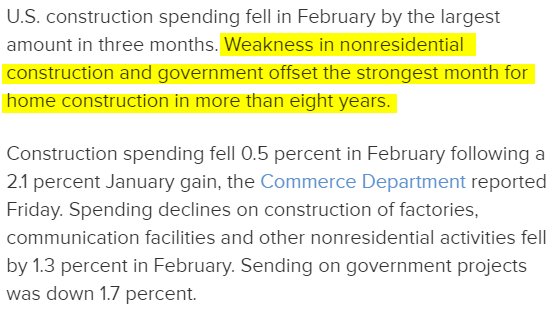Greetings,
This morning we start with Friday’s US employment report which showed continuing improvements in the nation’s labor markets. Here are some highlights.
Labor force participation and employment-to-population ratio rose as more Americans reentered the jobs market.


Growth in US labor force finally exceeded the population growth.

With more people now looking for work, the unemployment rate actually rose slightly.

As additional workers enter the labor force, wage growth remains tepid. So far there is little evidence of broad wage pressures, allowing the Fed to stay put for a while longer.

Here are several other items from the payrolls report.
1. US manufacturing payrolls saw a sharp decline, missing forecasts. This was confirmed by the manufacturing PMI measures discussed below.

2. Government hiring is now contributing to job growth in the US. Here is the year-over-year growth in government payrolls.

3. US oil & gas payrolls have fallen sharply on a year-over-year basis. This is the worst decline since the mid-80s.

4. Long-term unemployment in the US remains elevated. Anecdotally those who have been unemployed the longest have the toughest time finding work.

5. Here is the latest comparison between full-time an part-time employment changes since the start of the Great Recession.

Source: @WSJ, h/t Ed Bozaan
6. The final item on the labor markets comes from Pew Research showing continuing improvements in job availability.

Source: @FactTank
The combination of the payrolls report (above) and other economic data on Friday raised the implied probability of rate hikes in 2016 by nearly 10%.

Source: @adamsamson, @mamtabadkar
Another important economic report that came out on Friday was the ISM Manufacturing PMI. The headline measure was better than expected and showed US manufacturing back in (slight) growth mode (PMI > 50).

While manufacturing employment showed contraction, the ISM new manufacturing orders index recovered.

Even export orders stabilized.

It’s important to point out that much of this improvement in ISM PMI came at the expense of gutted inventories and tightened margins.
An alternative US manufacturing index from Markit showed little improvement (note that the markets tend to assign much more weight to the ISM report). Here are the highlights.

Source: @MarkitEconomics

Source: @MarkitEconomics
Continuing with the US economy, here are several other developments.
1. US construction spending was weaker than expected – with the weakness driven by commercial and public construction. Residential construction spending on the other hand continues to climb.


Source: @abcnews


















Leave A Comment